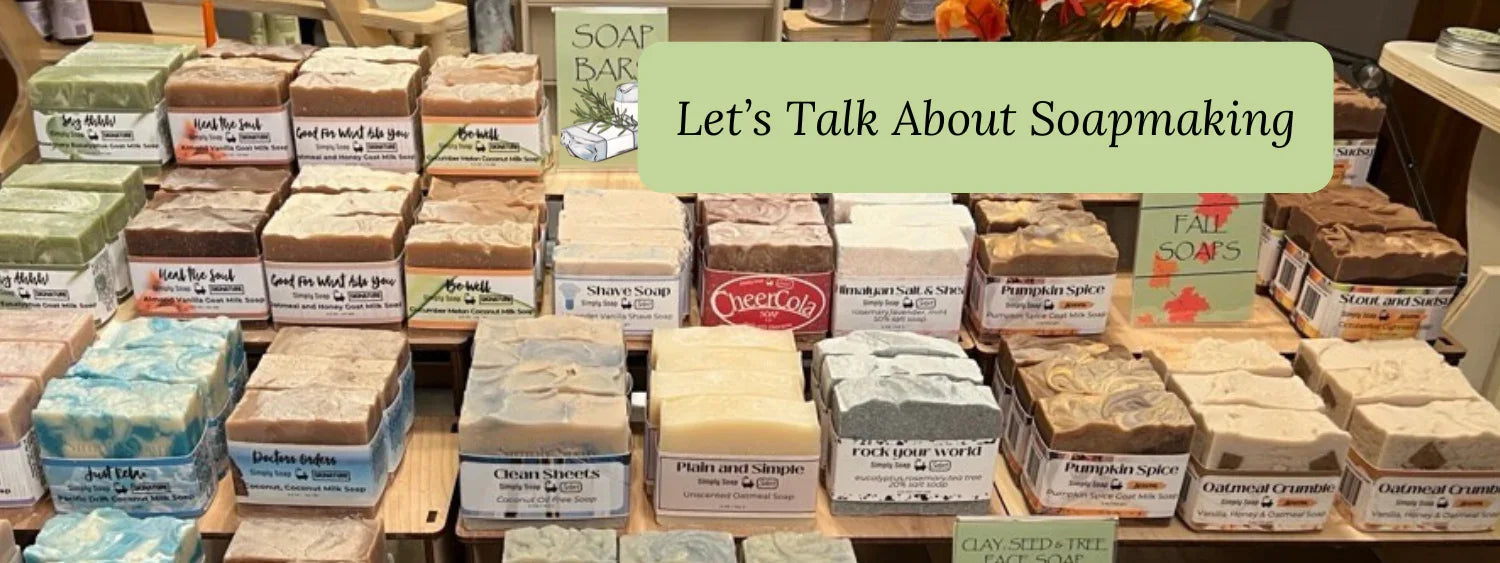
The Art of Handmade Soap
🧼 Handmade Soap: The Process Matters
When you pick up a bar of handmade soap, you’re holding more than just something to get clean with—you’re holding the result of a time-honored process that combines science, art, and nature. To understand why handmade soap feels so different from the store-bought kind, it helps to look at how real soap is made.
🔬 The Science of Soapmaking
At its core, soap is created through a process called saponification. This is the chemical reaction that occurs when fats or oils (like olive oil, coconut oil, or shea butter) are combined with lye (sodium hydroxide).
- The oils and lye react, transforming into soap + glycerin.
- The glycerin stays naturally within the bar, acting as a built-in moisturizer.
This is where handmade soap stands apart: in mass production, companies often remove the glycerin to sell separately in lotions and creams. The result? Commercial “soap” often feels drying and harsh on the skin.
🏭 What’s Really in Store-Bought Soap?
Here’s the surprising truth: many commercial bars on store shelves aren’t even soap at all. They’re marketed as “body bars,” “beauty bars,” or “cleansing bars.” Why? Because they’re made with synthetic detergents instead of lye and oil.
- Handmade soap: true soap, created through saponification, with natural glycerin intact.
- Commercial bar: often detergent-based, stripped of glycerin, and loaded with artificial fragrances, dyes, and preservatives.
The difference is more than marketing—it’s how your skin feels after using it.
🌿 The Role of Oils & Butters
Every oil and butter in soapmaking brings something unique to the bar. This is where handmade soapmakers get to be creative, crafting blends that balance cleansing power with moisturizing richness. For example:
- Coconut oil: Big, fluffy bubbles + cleansing
- Olive oil: Gentle, conditioning, long-lasting bar
- Shea butter: Rich, creamy lather + deep moisturization
- Cocoa butter: Firm bar + nourishing feel
- Castor oil: Boosts lather and adds silkiness
By blending these ingredients, handmade soaps can be tailored for specific skin needs—something commercial soaps simply don’t do.
✨ Beyond the Basics: Additives & Essential Oils
Handmade soap often includes extras that make a real difference:
- Oatmeal: Gently exfoliating and soothing
- Clays: Detoxifying and silky on the skin
- Herbs & botanicals: Add natural texture and mild benefits
- Essential oils: Bring natural scents with therapeutic properties (like lavender for calming or eucalyptus for refreshing)
- Salts: Create a harder, longer-lasting bar while offering gentle exfoliation and spa-like mineral benefits
And unlike heavily perfumed commercial bars, handmade soaps use scent and color with intention—never in excess—making them less likely to trigger irritation or allergies.
⏳ Patience Makes Perfect
Handmade soap isn’t instant—it takes time.
- Once the soap batter is poured into molds, it hardens in about 24 hours.
- The bars are cut and left to cure for 4–6 weeks. During this time, the saponification process finishes, and excess water evaporates.
- The result? A hard, long-lasting, gentle bar of true soap—no preservatives required.
🏆 Why Handmade Soap Wins Every Time
- Retains natural glycerin for moisturized skin
- Made with quality oils and butters, tailored for skin health
- Enriched with natural additives and essential oils
- No unnecessary preservatives, harsh detergents, or overpowering fragrances
When you use handmade soap, you’re giving your skin the care it deserves—something a commercial “beauty bar” just can’t match.
👉 Next time you lather up, know that the difference you feel isn’t just in your head—it’s in the process, ingredients, and intention behind every bar. You should try one of ours!
0 comments